How Much Heat Can a TV Withstand? (Samsung, LG, Sony & Vizio)
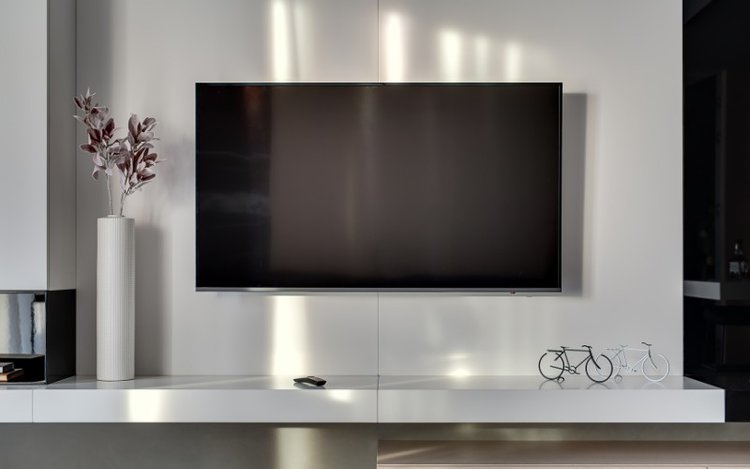
What To Know
- Samsung, LG, and Sony TVs can withstand operating temperatures up to 104°F (40°C), while Vizio TVs have a slightly lower tolerance of 95°F (35°C).
- For storage, Samsung TVs tolerate up to 113°F (45°C), Sony TVs up to 140°F (60°C), and Vizio TVs up to 120°F (48°C); LG does not provide data for storage heat tolerance.
- Sony TVs have the highest humidity tolerance at 90%, followed by LG at 80%, with no data available for Samsung and Vizio TVs.
In this article, I’ll quickly unravel the mystery of how much heat a TV can withstand, focusing on popular brands like Samsung, LG, Sony, and Vizio.
Let’s dive in for concise answers and practical tips to ensure your TV’s longevity and safety.
Quick Navigation
TV Heat Tolerance – Quick Guide
| TV Brand | Heat Tolerance When in Use | Heat Tolerance in Storage | Humidity Tolerance |
| Samsung | 104°F (40°C) | 113°F (45°C) | No Data |
| LG | 104°F (40°C) | No Data | 80% |
| Sony | 104°F (40°C) | 140°F (60°C) | 90% |
| Vizio | 95°F (35°C) | 120°F (48°C) | No Data |
Samsung
Samsung TVs can be used in rooms with an ambient temperature of up to 104°F, which is about 40°C. So, if your home is particularly steamy during the summer, consider turning on the AC or a fan.
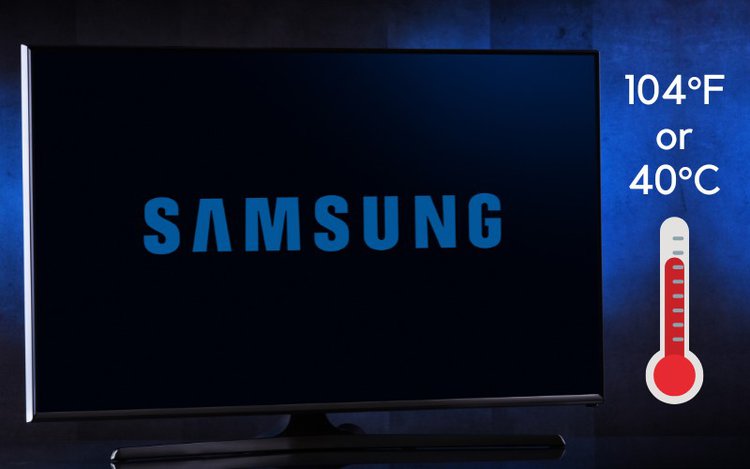
However, TVs from this brand can tolerate much hotter environments when in storage (i.e. turned off and unplugged from power). If you’re storing your Samsung TV in an attic or garage, ensure its temperature doesn’t exceed 113°F or 45°C.
While many manufacturers provide users with their TVs’ humidity tolerance, Samsung does not. So, we recommend you refer to other brands’ humidity tolerances to estimate which humidity levels Samsung TVs can endure.
LG
Like Samsung TVs, LG TVs can also function correctly in an environment that’s up to 104°F or 40°C. That’s the record temperature in several countries, so it’s a good idea to pay close attention to your home’s temperature during the warmer months.
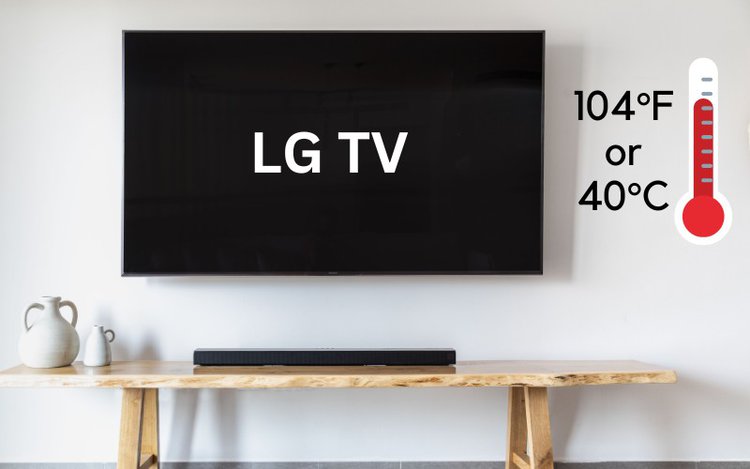
LG also claims that its TV’s maximum humidity tolerance is 80%. Considering most homes’ maximum humidity is 60%, you shouldn’t have to worry about this too much if your TV is in a central location.
However, garages’ humidity can reach up to 90%. So if your TV is in storage, pay close attention to its average humidity levels, especially during the rainy season.
LG does not specify their TV’s heat tolerance when in storage.
Sony
Similar to Samsung and LG, Sony also claims that the hottest environment their TVs can operate in is 104°F or 40°C.
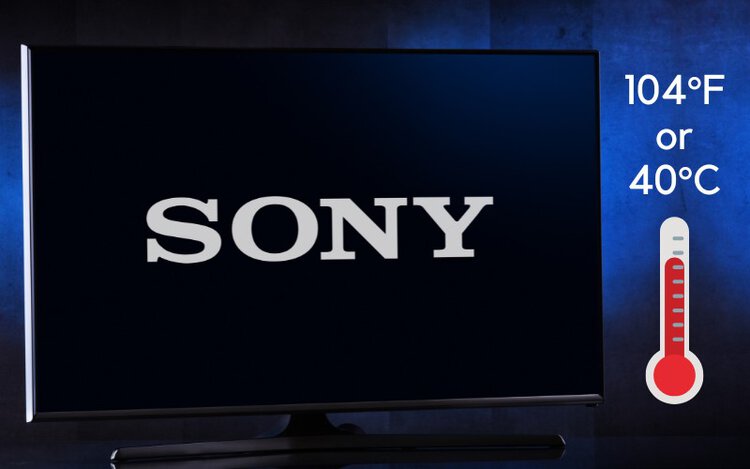
Their TVs, however, have a much higher heat tolerance when in storage. According to Sony, you can store your Sony TV in rooms up to 140°F or 60°C. This means that you can keep your Sony TV in your hot garage during the summer without worrying about it being broken or cracked when you try to use it again.
However, you should be careful when storing it in attics, since they can often become hotter than 140°F when it’s 90° out.
Sony TVs can also withstand the highest humidity levels, with the ability to be used or stored in areas with 90% humidity. So, if you live in a particularly humid area, consider investing in a Sony TV.
Vizio
Vizio TVs have, by far, the lowest heat tolerance out of all of the brands mentioned. Their units can only withstand 95°F or 35°C environments. While this may seem hot, many regions exceed this temperature during spring and summer.
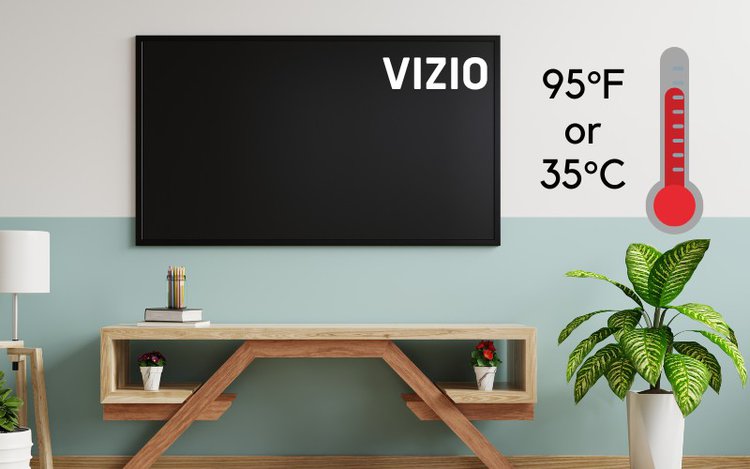
That said, Vizio TVs can be stored in hotter areas than Samsung TVs since you can safely store them in a 120°F or 48°C room.
Vizio does not disclose its TVs’ humidity tolerance.
How To Keep My TV Cool?
Here are the easiest ways to keep your TV cool.
Now that you know your TV’s maximum heat tolerance, you can plan how to ensure your TV stays cool during the year’s hottest days.
Alternatively, your TV may frequently overheat due to its use time, entertainment setup, or full storage.
Let’s go over our top tricks and tips for keeping your TV cool!
Keep It Away from Heating Appliances
TVs stored next to heating appliances, such as fireplaces, space heaters, or heating units can quickly overheat. These appliances release a large amount of concentrated heat, warming up your TV’s hardware.

In some cases, your TV’s screen and bezel may even begin to melt.
So, when mounting your TV above a fireplace, it’s imperative to carefully measure how hot the wall above the fireplace becomes. If you find that the wall’s temperature exceeds the TV’s heat tolerance, it’s best to mount it in another area of your home.
When using space heaters, ensure they are several feet away from your TV console and facing the opposite direction.
Ensure It’s Well-Ventilated
Is your TV console cluttered with adorable knickknacks, doilies, and books? If so, your TV may not be properly ventilated.
Poorly ventilated TVs are unable to circulate the heat they produce, causing them to become hotter and hotter until they overheat. This is of particular concern when it’s already warm in your home, as your TV will overheat fast.
So, make sure your TV console is clutter-free and that there’s nothing on top of or next to your TV.
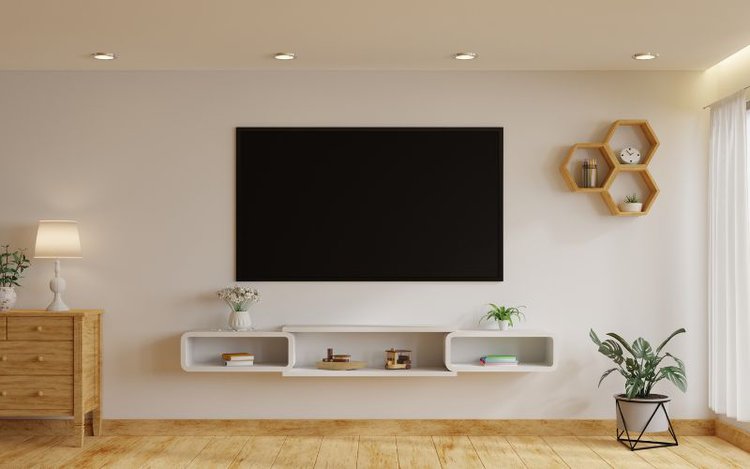
If your TV is wall-mounted, use spacers to distance your TV from the wall. You may also want to remove any tapestries hanging behind or next to your TV, as they will only further insulate the heat.
Should your TV continue to overheat, direct a small fan at it to disperse the heat. Some fans, like the product below, are specifically designed to be used with wall-mounted TVs. They attach to the back of the unit and quietly cool your TV.
(Paid Link.)
Decrease the Brightness
Is your TV super bright? If so, its brightness may be contributing to its heat production. Decreasing your TV’s brightness lessens its power consumption which, in turn, decreases its likelihood of overheating.
Some older TVs have brightness-adjusting buttons on their remotes. Newer smart TVs’ brightness settings are often located in their settings.
Let’s learn how to adjust a Samsung smart TV’s brightness.
How to Decrease a Samsung TV’s Brightness
Step 1: Navigate to the Settings, either by going to the Settings app on the Home page or by pressing your remote’s Settings shortcut button.
Step 2: Go to Picture.
Step 3: Scroll down and select Expert Settings.
Step 4: Click on Brightness.
Step 5: Use your remote’s Left Arrow (←) button to decrease the brightness. To increase the brightness, press the remote’s Right Arrow (→) button.
Watch the video below demonstrating how to adjust your Samsung smart TV’s brightness.
Adjust the Picture Mode
Some TVs’ preset picture modes use a lot of energy to adjust the screen’s brightness and color. While these special picture modes can be useful when playing video games or watching sports, it’s best to avoid using them as they can cause your TV to overheat.
Instead, change your TV’s picture mode to Standard.
We’ve included instructions below outlining how to do this on Samsung smart TVs. Bear in mind that these steps may vary for other TV brands.
How to Change a Samsung Smart TV’s Picture Mode
Step 1: Click on the Settings app on the Home page.
Step 2: Press the Up Arrow (↑) button to access the Quick Settings.
Step 3: Select Standard from the list of available picture modes.
Watch the video below demonstrating how to change your Samsung smart TV’s picture mode and learn more about how each of the available picture modes differ.
Give It a Break
I’m the first to admit that I spend at least one of my days off binge-watching TV. While you might not tire of watching eight straight hours of Yummy Mummies, your TV needs a break.
Turn your TV off every few hours of watch time to allow it to rest. Allow it to completely cool before turning back into your favorite show.

Not only will this give your eyes a rest, but it will also prevent your TV’s temperature from exceeding the recommended limit.
Additionally, be sure to turn your TV off before leaving your home, as it could overheat while you’re away, leading to an unpleasant surprise upon your return.
Wrapping Things Up
Most TV brands have a heat tolerance of 104°F (40°C), with the exception of Vizio TVs whose heat tolerance is 95°F (35°C).
TVs can tolerate more heat when in storage as they’re turned off and not exerting any energy. You must also be mindful of your TV’s humidity tolerance, as too much humidity can damage its delicate internal components.
To keep your TV cool, keep it away from heating appliances and ensure it’s well-ventilated. Also, consider adjusting its brightness and picture mode settings. Finally, don’t forget to turn your TV off every few hours to give it a break.
Did you know your TV’s heat tolerance? How do you keep your TV cool?
Let us know in the comments below!
Yesenia Achlim is a technical copywriter and editor with a focus on AV equipment. She aims to break down complicated topics and make technology accessible, no matter your technical expertise. When she’s not teaching you how to replace a projector lamp, you can find her reading and baking.



Why does my TLC Roku TV overheat while watching MAX. It does it on other channels but not as often as on MAX.